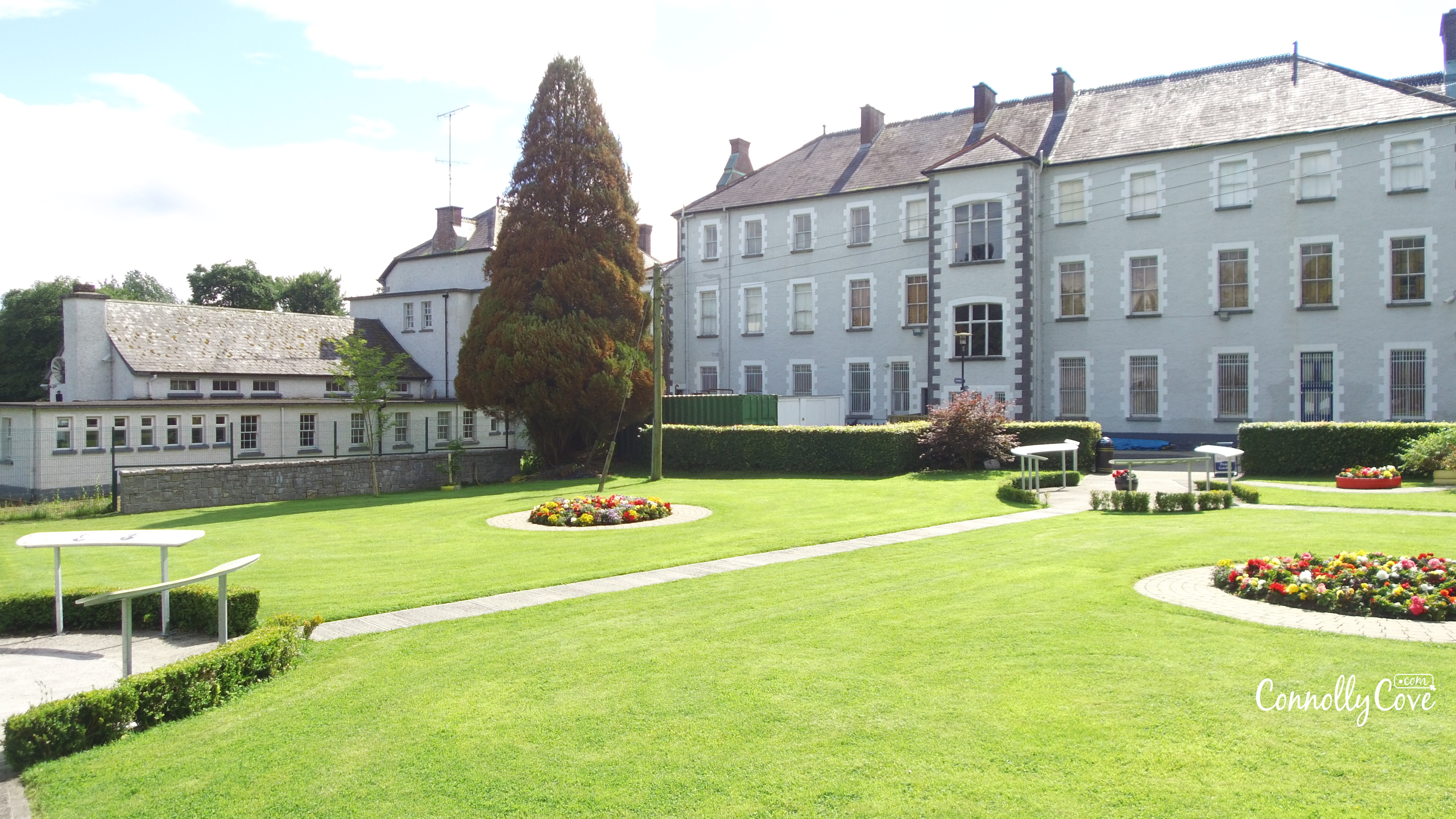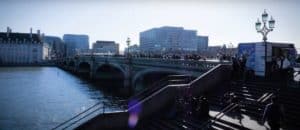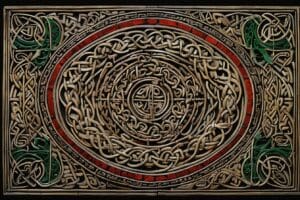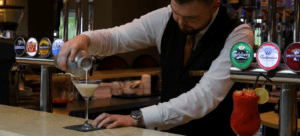Cavan County Museum, Ireland
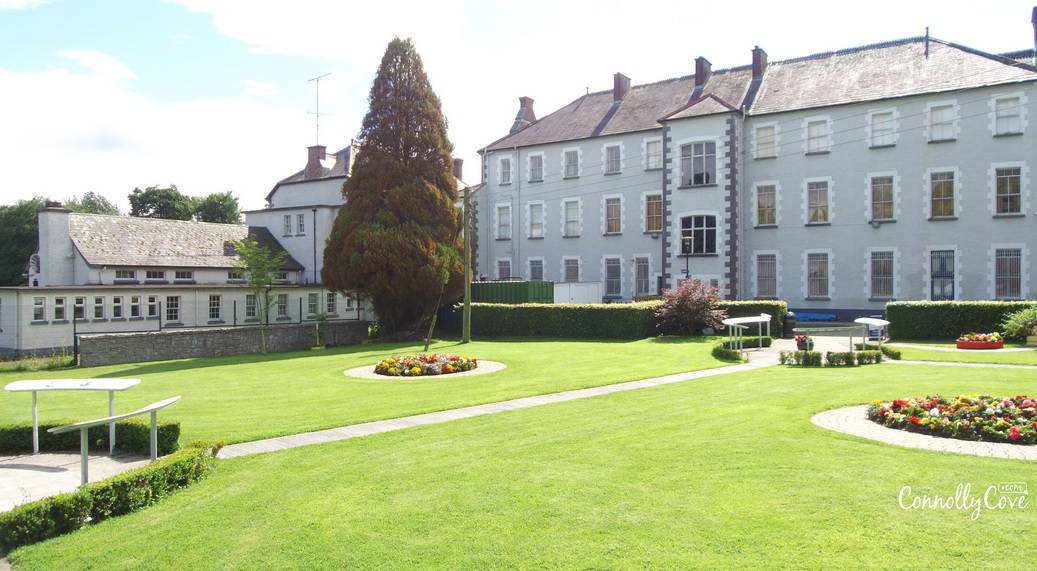
Updated On: April 07, 2024 by Shaimaa Olwan
Cavan County Museum in Ireland has so much to offer and is dedicated to telling the history of County Cavan. There is a variety of galleries and exhibitions that tell the history of this County. Collecting, conserving and displaying the heritage material for the public.
On the surface, you may look at it as a local museum resting in the centre of Cavan for many years. At its core, Cavan County Museum is a great example of an excellent local museum. With well-designed exhibitions tracing the history and heritage of Cavan from pre-Christian times right up to the mid-20th century.
Visiting Cavan County Museum
History of Cavan Museum
Housed in a 19th-century former convent in Ballyjamesduff, the museum opened in June 1996. In the peaceful realm that used to be occupied by the Poor Clare order. The museum traces the history of Cavan from the Stone Age through modern times. The material culture of County Cavan and surrounding districts uses various exhibits and houses. Exhibition galleries feature unique artefacts from the Stone Age, Bronze Age, Iron Age, and Medieval.
The County Cavan Museum aims to collect, conserve and ultimately display the material heritage and culture of County Cavan for the benefit of the public.
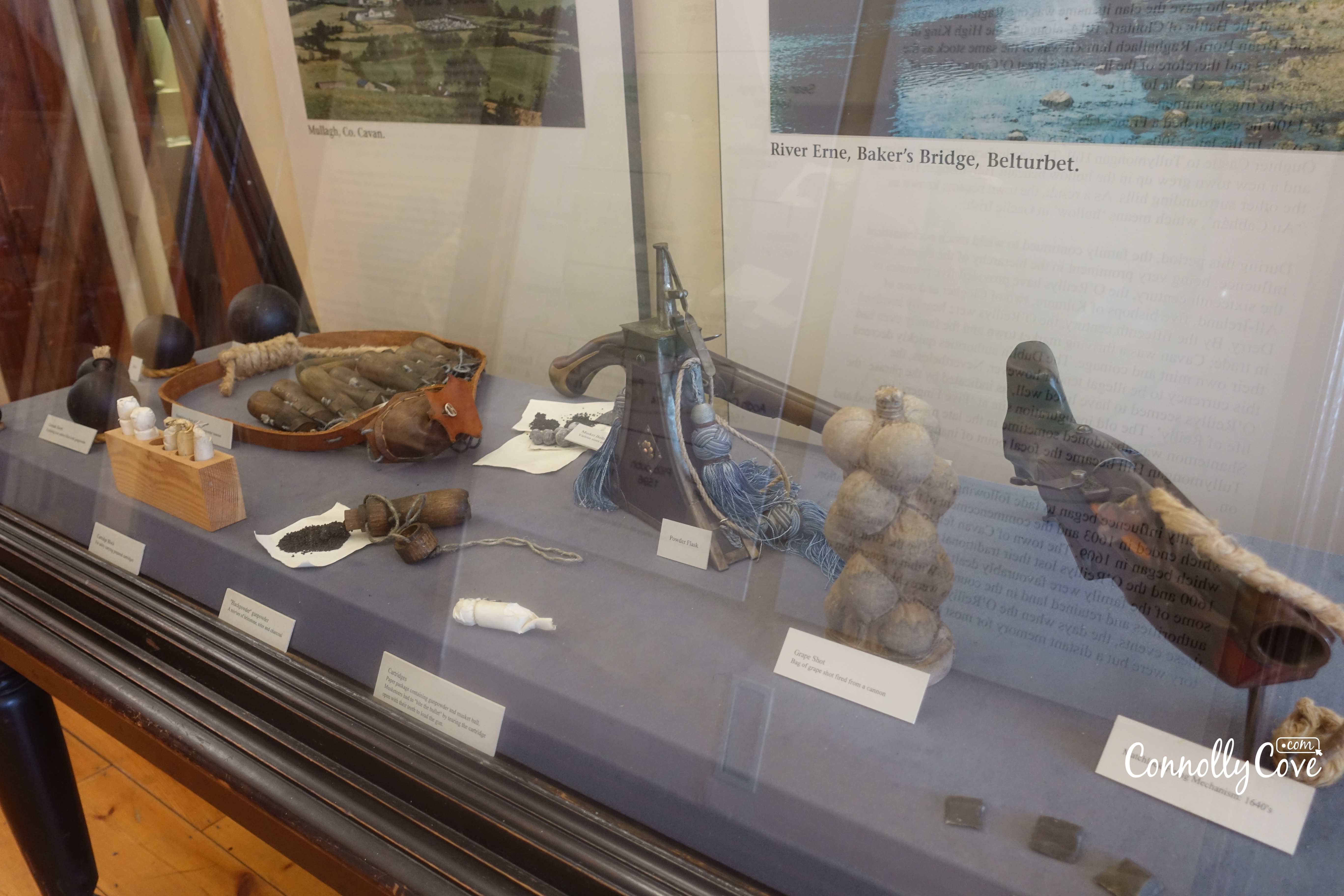
Exhibits on Display
The museum has a range of permanent exhibits housed in different rooms. For example, the Archaeology Room contains various items, such as 7,000-year-old Neolithic flint flakes. As well as various Iron Age tool heads and food containers. Particularly exciting exhibits include the Lavy Sheela-na-gig and a fantastic exhibition of costumes in the Pighouse Collection. Originally collected by a local enthusiast, a one named Mrs Phyllis Faris.
Additionally, The Killycluggin Stone, the Ralaghan figure and the three-faced Corleck Head are three of its star exhibits. They are some of the country’s most recognisable examples of Celtic spirituality. It’s worth checking out if you’re into things like that.
There are also good sections on traditional farming in the area. Along with GAA Gallery, which will primarily interest followers of Cavan GAA. It’s a treasure house of sporting history and includes an extensive collection of medals, cups, jerseys, and programmes. A small but well-assembled exhibit about the famine years in Cavan includes, poignantly, a pair of shoes recovered from a famine grave.
The museum often receives items of local interest on loan from the National Museum in Dublin. An example of an item previously on loan at the museum is the Breac Maedoc. Which is an 11th-century Reliquary (a container that initially held bones or other relics) of Saint Madoch.
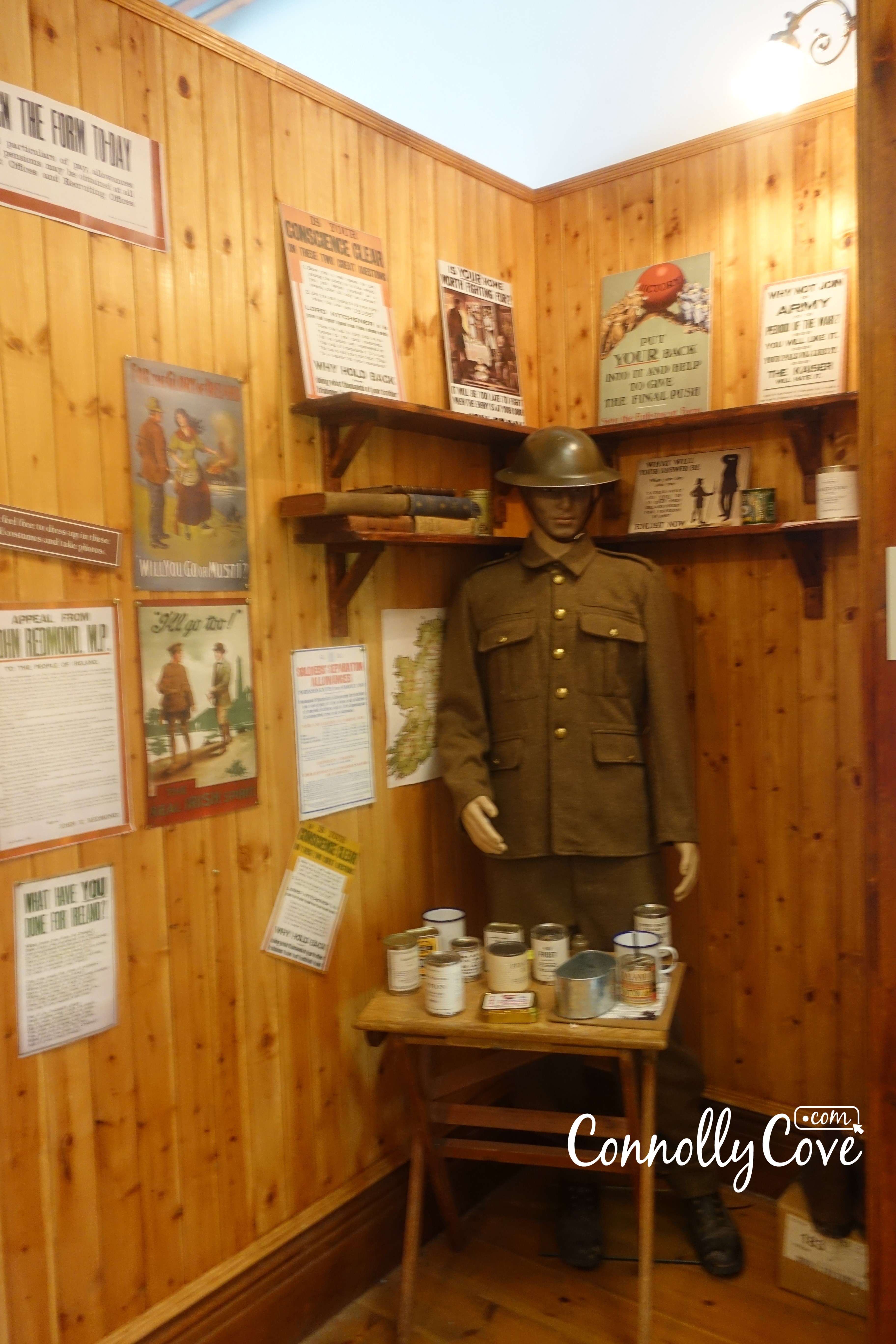
World War 1 Trench Experience
The Cavan County Museum is also home to the World War I Trench Experience. And the most extensive outdoor replica trench open to the public in Ireland and the UK. The trench was built to the specifications and manuals of the Irish Guards. It was used by the Royal Irish Fusiliers at the Battle of the Somme 1916 and is over 350m long. It also includes frontline, communication, and support trenches. Over 6000 sandbags were used in its construction.
More so, the Folklife Gallery enables visitors to imagine life in the late 19th and early 20th centuries. Newly opened galleries deal with topics as diverse as the Great Famine, Percy French and Lord Farnham.
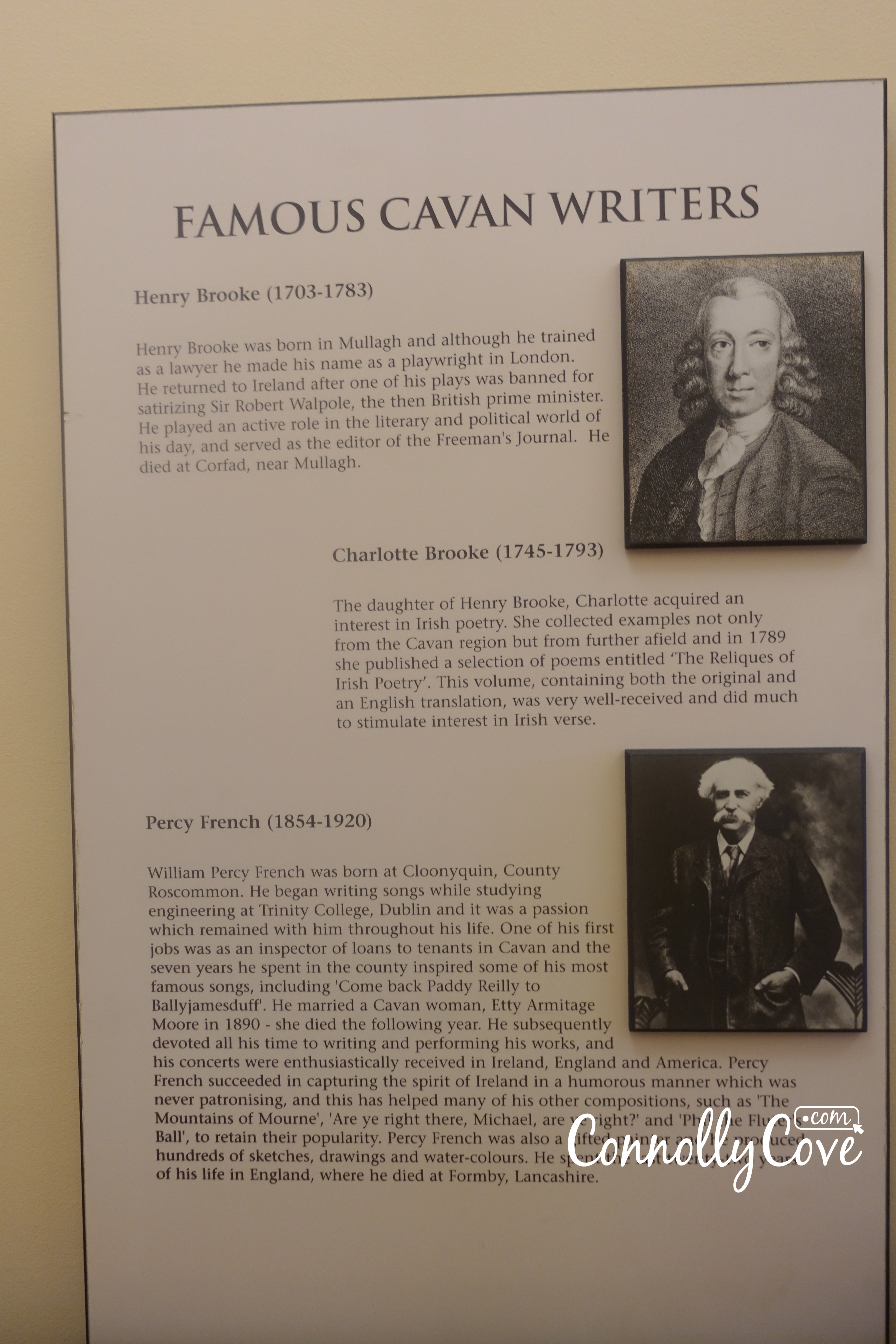
Interactive Experiences
What sets the museum apart is its commitment to providing interactive and immersive experiences for visitors of all ages. From hands-on exhibits to guided tours and educational workshops, there are plenty of opportunities to engage with the museum’s collections and learn in a fun and interactive way.
One of the museum’s most popular attractions is its replica trench system, which offers visitors a glimpse into the harsh realities of trench warfare during World War I. Through realistic recreations and informative displays, visitors can gain a deeper understanding of the experiences of Irish soldiers who fought in the war.
For younger visitors, the museum offers a range of educational programs and workshops designed to spark curiosity and inspire learning. From historical reenactments to arts and crafts activities, these programs encourage children to explore the past hands-on and engagingly.
The Museum Experience
Upon entering the museum, visitors are greeted by a captivating display of exhibits spanning various periods of history. The museum’s layout is designed to guide guests through different thematic sections, offering a cohesive narrative of Cavan’s past.
Archaeological Treasures
One of the museum’s highlights is its collection of archaeological artefacts dating back thousands of years. From prehistoric tools to Celtic artefacts, these relics offer a glimpse into the lives of the region’s ancient inhabitants. Visitors can marvel at intricately crafted pottery, exquisite jewellery, and other archaeological finds unearthed from local excavations.
The Great Famine Exhibition
A poignant reminder of Ireland’s turbulent past, the Great Famine exhibition delves into one of the darkest chapters in Irish history. Through interactive displays, archival documents, and personal accounts, visitors can gain insight into the devastating impact of the famine on the people of Cavan. The exhibition pays tribute to the Irish population’s resilience while highlighting the ongoing importance of preserving cultural heritage.
Military History
The museum also boasts an extensive collection of military artefacts, showcasing the region’s rich military history. The exhibits offer a comprehensive overview of Cavan’s contributions to various conflicts throughout history, from uniforms and weaponry to photographs and letters. Visitors can explore the role of local regiments, learn about notable military figures, and gain a deeper understanding of Ireland’s military heritage.
Rural Life
For those interested in the agrarian history of Cavan, the museum’s rural life exhibits provide a fascinating insight into traditional farming practices. Visitors can explore authentic farm buildings, machinery, and tools dating back to the 19th and early 20th centuries. Interactive displays offer a hands-on experience, allowing guests to step back in time and imagine life in rural Ireland centuries ago.
Folklore and Tradition
Cavan County Museum celebrates the rich folklore and cultural traditions that have shaped the region’s identity. From storytelling and music to traditional crafts and customs, the museum offers a glimpse into the vibrant cultural tapestry of Cavan. Visitors can learn about ancient myths and legends, explore traditional Irish dance and music, and discover the customs passed down through generations.
Community Engagement and Outreach
Beyond its role as a tourist attraction, the museum plays a vital role in the local community, serving as a hub for education, research, and cultural exchange. Through outreach programs, partnerships with local schools, and collaborations with community organizations, the museum strives to enrich the lives of residents and foster a deeper appreciation for Cavan’s history and heritage.
The museum also works closely with historians, archaeologists, and other experts to conduct research and preserve valuable artefacts and documents. Through ongoing conservation efforts and digitization projects, the museum ensures that Cavan’s heritage is safeguarded for future generations.
Preserving the Past for the Future
As custodians of Cavan’s heritage, the staff and volunteers at Cavan County Museum are committed to preserving and protecting the museum’s collections for future generations. State-of-the-art conservation facilities ensure that artefacts are stored and cared for optimally, safeguarding them against damage and decay.
The museum also actively collaborates with local archaeologists, historians, and heritage organizations to research and document the history of the Cavan region. Ongoing archaeological excavations and research projects contribute to our understanding of the area’s past, uncovering discoveries and shedding light on previously unknown aspects of Cavan’s heritage.
Visiting the Museum
Located in Ballyjamesduff, County Cavan, the Cavan County Museum is easily accessible by car and public transport. The museum is open to visitors year-round, with regular opening hours and guided tours available.
Admission fees are affordable, with discounts available for students, seniors, and families. Group bookings and educational visits can also be arranged in advance, making the museum an ideal destination for school trips, group outings, and special events.
For those unable to visit in person, the museum offers virtual tours and online resources, allowing visitors to explore its collections and exhibits from their homes.
Opening Times
The museum is open all year round from 10 am to 5 pm Tuesday-Saturday and during June-September on Sundays from 2 pm to 6 pm. There is a craft shop, a cafe and an excellent children’s playground, which will visit here a winner, even for those too young to appreciate the treasures inside.
Conclusion
Cavan County Museum stands as a beacon of cultural heritage, offering visitors a captivating journey through the annals of time. The museum provides a comprehensive overview of Cavan’s rich and diverse history, from ancient artefacts to modern exhibits. Through its commitment to education, community engagement, and conservation, the museum inspires future generations to appreciate and cherish the heritage of this remarkable region. Whether you’re a history enthusiast, a curious traveller, or a resident, visiting the Cavan County Museum promises an enriching and unforgettable experience.
Have you ever been to this museum? Or would you like to plan a visit in the future? We would love to know 🙂
Also, don’t forget to check out some of our other blogs that might interest you, such as The Mac- Metropolitan Arts Centre, Carrickfergus Museum, Enniskillen Castle Museum, Down County Museum, Dublinia Viking Museum,Headhunters Barber Shop and Railway Museum, Trinity College Dublin,Titanic Museum.


